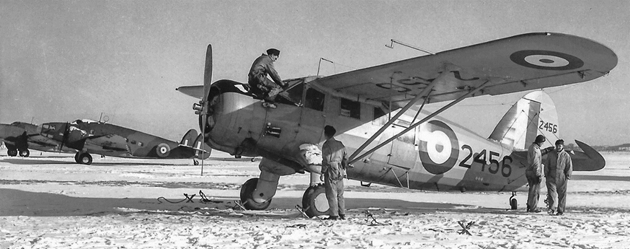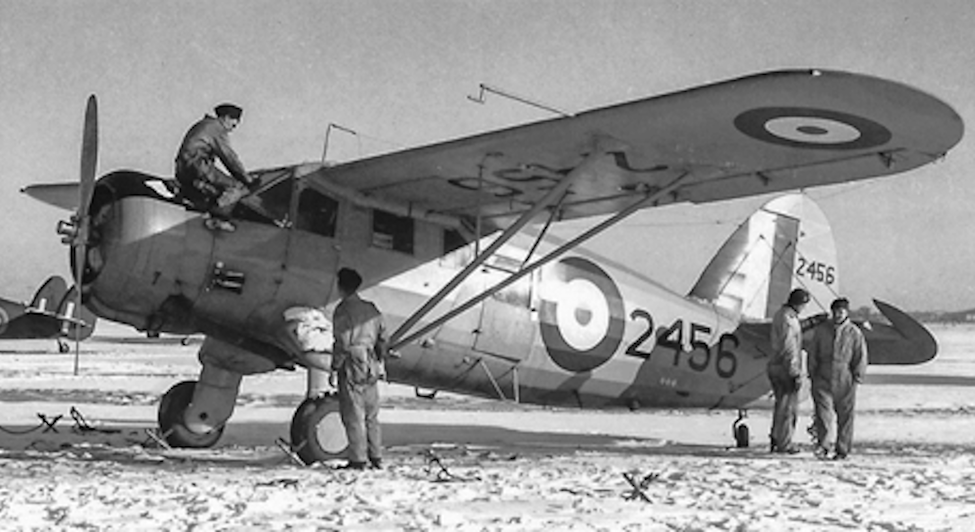Historic Norseman Aircraft to Fly Again at the Commonwealth Air Training Plan Museum
The Commonwealth Air Training Plan Museum (CATPM) in Brandon, Manitoba, announced the acquisition of three historic Noorduyn Norseman aircraft, including one in flying condition, in early June. This exciting addition strengthens CATPM’s mission to showcase the history and legacy of the British Commonwealth Air Training Plan (BCATP) and Canadian aviation heritage.
The CATPM is dedicated to presenting the aircraft, equipment, and facilities that were vital to the British Commonwealth Air Training Plan. One aircraft long sought for the collection was the Noorduyn Norseman.
“We are honoured to bring these iconic Norseman aircraft home to Brandon,” said Stephen Hayter, Executive Director of CATPM. “This project not only preserves an important piece of our BCATP history but will allow visitors to experience the sights and sounds of a wartime Norseman in flight.”
Hayter says they're thrilled one of the newly acquired Norseman aircraft is in flying condition.
The Museum’s Flying Committee aims to have it operational later this summer. Once airborne, CATPM will become only the second museum in Canada to operate a Norseman as part of an active flying programme. The aircraft will be restored to reflect its wartime appearance as part of the BCATP with the traditional yellow body and wings with the iconic circular markings on the wings and fuselage.

"We've had bits and pieces of Norseman aircraft in our collection for quite some time but nothing that was airworthy, nothing that was really complete," shares Hayter. "They are a very rare aircraft and they're a Canadian aircraft. Norseman was used in all sorts of interesting roles. They were used in transport, navigator training, wireless operator training, and that's our story."
The airworthy Norseman will be added to the contingent of restored aircraft that share the joy of flight in a vintage plane at the CATPM: the De Havilland Tiger Moth (Cdn version), the de Havilland Tiger Moth (UK verson), the Fairchild Cornell PT26, the North American Harvard Mark II, the Stinson Model 105 Voyager and the Fleet Finch 1.
"To be able to show a Norseman up close and personal to the viewing public and having it fly around Manitoba occasionally will be a great ambassador for the story that we're telling," he adds.
Hayter says their collection of Norseman are in various states of restoration and repair. "One of our Norseman that we've had for a number of years was actually a bush plane up north, so it's in more modern colors. But of course, they should be 'training yellow' and have the round marking on the side. And ultimately, we will ensure that the markings on these aircraft are appropriate and represent the history of the Second World War."
Now some history on Noorduyn Norseman and the aircraft he built:
Noorduyn was born in the Netherlands and studied aeronautics in Germany in 1912. He moved to Britain in 1913 and began his career in the world of aircraft design during WWI.
In 1934 Norseman moved to Montreal to establish his own aircraft manufacturing company. He had already created several airplanes popular with bush fliers and included bush pilots in the discussions to learn about their requirement necessary when taking on the oftentimes precarious conditions they came across in the wilds of the north.
Bush pilot had to operate their aircraft in remote areas for long periods of time, and in extreme weather conditions. They had to operate the aircraft fluently on wheels, floats or ski to cover rough airstrips, waterways or arctic snow and ice. Cargo could be bulky, like large oil drums, and passengers may be in need of a flight in or out of any situation.
The bush pilot needed to be multi-skilled as a navigator, mechanic, wilderness survivalist, ambulance driver, cargo transport and in-flight taxi driver. Again, out in the tundra they did not have access to airport facilities and so had to rely on their landing skills to bring the plane down safety, no matter what the conditions.
With its rugged construction and versatility, the Norseman became an iconic Canadian aircraft.
![]()
The British Commonwealth Air Training Plan was a pivotal Second World War programme that trained over 131,000 aircrew for the Allied war effort. The facilities and industries developed to support the BCATP laid the foundation for Canada’s aviation growth.
With the onset of war, the Royal Canadian Air Force (RCAF) ordered 38 Norseman aircraft for BCATP use, serving in roles such as transport, navigator training, and wireless operator training. Over the course of the war, about 100 Norseman aircraft entered RCAF service. Their durability also made them attractive to the United States military, which acquired nearly 700 for wartime use.
Originally intended as trainers for navigators and radio operators, they subsequently proved invaluable for rescue and transport work.
The Norseman remained in RCAF service until the late 1950s and later continued its career in Canada’s North as a preferred bush plane, securing its place in Canadian aviation history.
Please listen to more with Stephen Hayter below as he shares more history and insight of this dynamic Canadian aircraft.

The CATPM wishes to thank Mr. Dennis Mockford, Mr. Curt Enns of Wings Over Kississing, and our friends at RAMWC for these important acquisitions.
This acquisition builds on a longstanding partnership between the Royal Aviation Museum of Western Canada (RAMWC) and CATPM. It is not the first deaccession from RAMWC to CATPM; the two museums have a long history of collaboration and mutual support in advancing the preservation of Canada’s aviation heritage.
CATPM extends its thanks to the staff at Red Lake Airport, Mr. Gary Pollinuk (Riverside Aircraft), and Mr. Rodney Kozer for their invaluable guidance.
Stay tuned for restoration updates and the public debut this summer.
The CATPM is open every day through the summer months from 10 am to 4 pm. Click HERE for more information!
